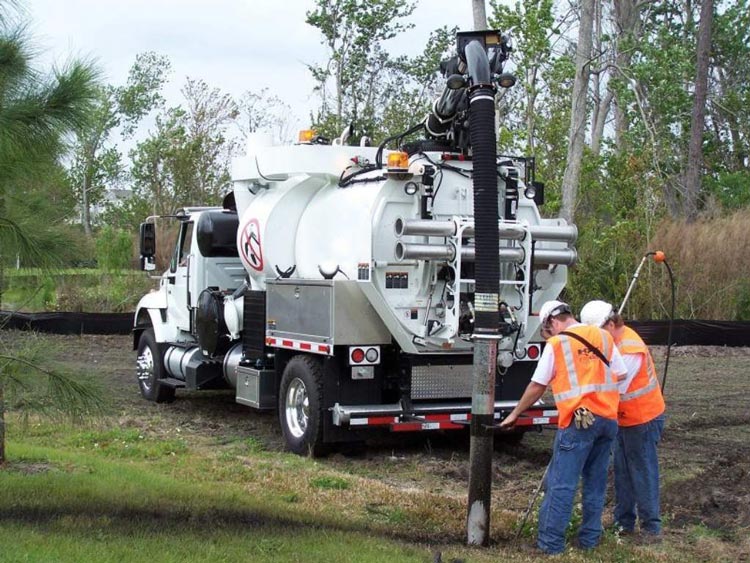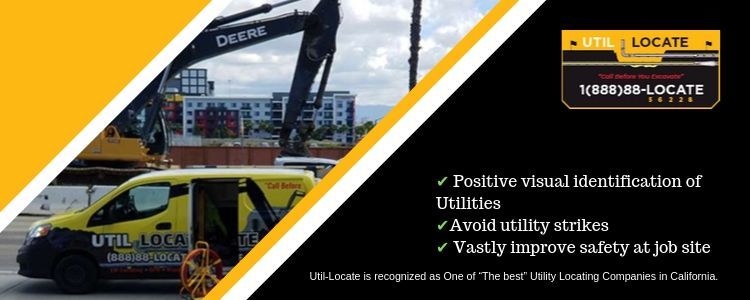When it comes to locating underground utility lines, there is no doubt that vacuum excavation is the best method available. Not only is it efficient, it is also safer and cost-effective – making it an all-around great choice for any construction project.
There are two forms of vacuum excavation: hydro and air excavation. These forms rely on water and air pressure respectively to clear earth and reveal subsurface utilities.
At first glance, these forms of utility potholing may seem like they produce the same results. Upon closer examination though, it is clear that hydro vacuum excavation will provide you with the best experience. This is because hydro excavation is faster, can be used on more difficult terrains, and can handle larger construction sites.
Still unsure of which type of vacuum excavation to choose? Keep reading to learn the pros and cons of both forms and why hydro excavation is likely the right choice for you.
The Difference Between Hydro and Air Excavation
The most obvious difference between these methods is that one relies on high-water pressure to push through the earth and the other uses air pressure. With this distinction comes a few other differences that are important to keep in mind while you decide which option to use. For example, air excavation allows you to reuse the ‘spoil material’ that was taken to refill the hole.
There is one small caveat: air excavation also takes longer and may be ineffective against harder or denser soils.
Both forms of utility potholing use large trailer-mounted storage units to hold the displaced soil. This makes moving the soil away from the hole or even away from the entire construction site a simple and easy process.
Regardless of whether you choose air or hydro excavation, it’s important to know how many holes you will be digging so that you know how big these storage units should be because their capacities can range anywhere between 150-2,000 gallons.
This can make a HUGE difference when you consider that the spoils will need to be dumped every time the container fills up. A larger container will make the process more efficient and easier for everyone.
Another massive quality of both hydro and air excavation is how relatively safe they are when carried out by an experienced team. Compared to backhoes or even manual excavation, vacuum excavation is proven to be very safe for your crew and avoids the risk of striking utility lines.
Most Efficient Utility Potholing Choice
Without a doubt, hydro excavation is the fastest vacuum excavation option available. That’s because water erodes the ground faster and can target the dig site more accurately to form a smaller, more precise hole. Water in itself is also a flexible and adaptable form to use because it can soften the earth and make the overall excavation easier.
It’s easy to understand then, exactly why hydro excavation is the first choice when dealing with more difficult terrain consisting of particularly hard or rocky earth.
You should also consider the climate when making a decision. In the winter, the earth does tend to get colder and some soils like clay can harden. The water used for excavation can be heated with a boiler, making it much more effective than air could ever be.
The Size of Your Construction Site
The larger the construction site is, the more utility lines you will have to dig for. This can massively prolong the process. When time is of the essence, hydro excavation should be used.
It should also be noted that the debris tanks used with hydro excavation are typically much larger than those with air. This means that you won’t be required to dump the tank’s spoils every so often (involving a trip to an off-site dumping facility). Choosing hydro excavation allows you to dig more holes in less time.
On the other hand, vacuum excavation using air pressure will allow you to fill in the holes with the soil that was originally removed. This might work well for small construction sites because you won’t have to dump the soil away from the site – but take note: the process will still be a slower one overall, which can cause costs to rise.
Water Source
Another thing to bear in mind is where the nearest water source is located. The larger hydro excavation tanks can hold up to 1300 gallons of water which roughly translates into about 3-5 hours of dig time. When you run out of water, it will need to be refilled somewhere. This isn’t a problem at all if you have an on-site or nearby water supply, but it could be more of an inconvenience if the water supply is farther afield.
While you won’t face this problem with an air tank, air often isn’t enough alone to excavate all utility lines. When you reach a particular difficult dig site, most vacuum excavation teams will switch to water anyway to get the job done. Using hydro excavation in the first place will prevent the hassle of switching to a different form and technique in the middle of a project.
The Bottom Line
While there are certainly benefits to both hydro and air excavation, most evidence points to hydro excavation being the most efficient and hassle-free method.
Hydro excavation is known to be much faster and more effective when digging through difficult or frozen terrain. However, if you are located far away from a reliable water source, air excavation could be a better option.
It is always important to consider a specific construction site before making a decision. Taking into account the size, terrain, and location of the construction site will help you understand your excavation needs and which form of excavation is best.


